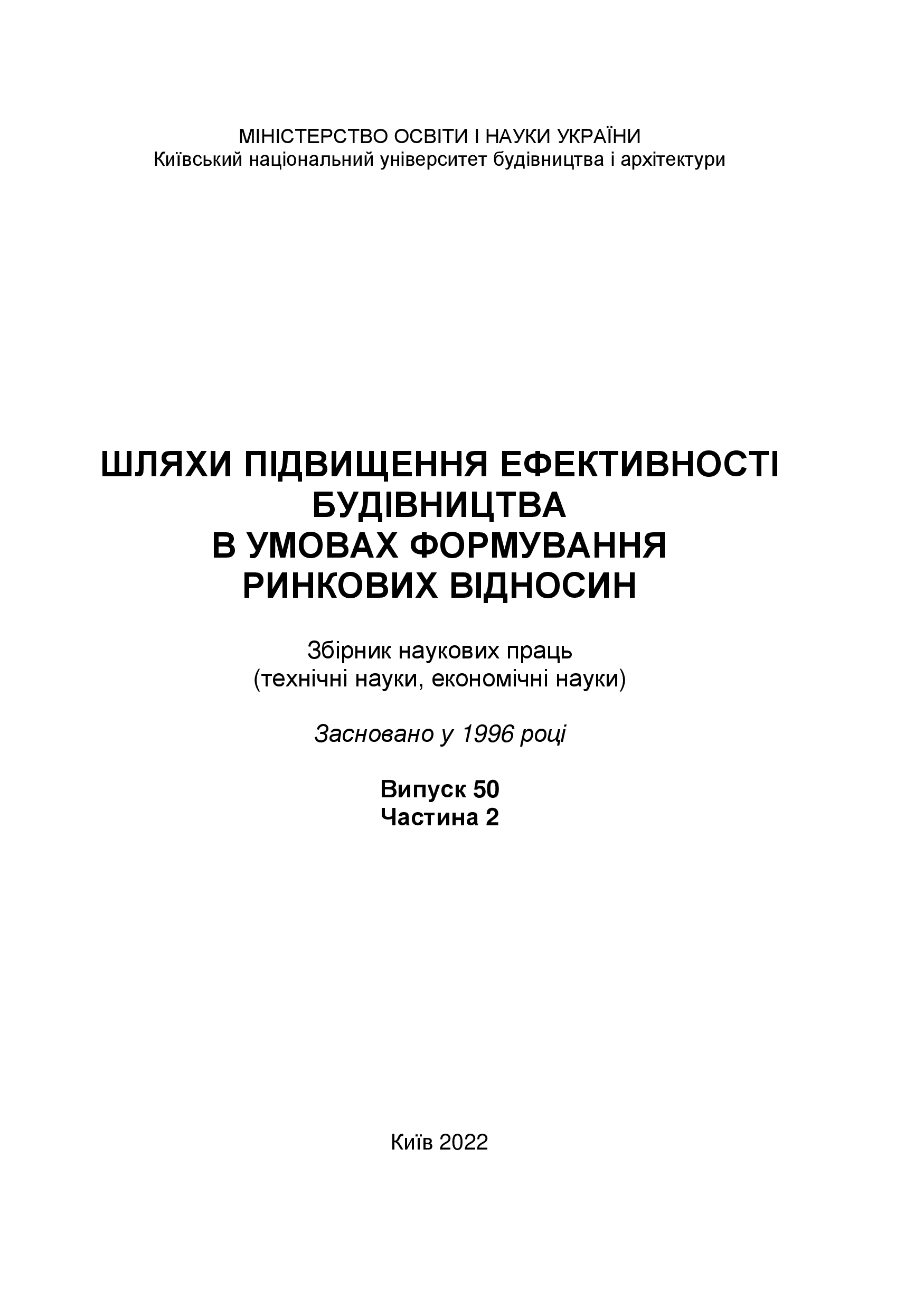Reengineering of the system of organizational and economic management of construction participants on the basis of digitalization
DOI:
https://doi.org/10.32347/2707-501x.2022.50(2).303-313Keywords:
innovations, digitalization, building information modeling (BIM), object life cycle, engineering, construction cost, organizational and economic management, pricing, cost management, digital innovations, contractor, designer, developer, engineering company, construction project enterprises, stakeholders and construction participantsAbstract
This article examines and proposes a method of improving organizational and economic management systems in construction participants using the example of engineering companies through the prism of digitalization. As the construction industry is experiencing a paradigm shift towards digital transformation, this study focuses on providing a specific application toolkit for the implementation of digital technologies and the activities of construction sector enterprises and in particular engineering companies.It was found that the creation of the Unified State Electronic System in the field of construction made it possible to transform the business processes of construction organization and management, administration of construction projects, interaction of construction participants, including design enterprises, general contractors, customers, development companies, subcontractors, suppliers of construction materials, products and structures, engineering companies and other construction stakeholders.The services of engineering companies that they can provide during the implementation of construction projects and various stages of the object's life cycle are given, engineering companies are suggested to use digital and VIM technologies to optimize their organizational and management structures and business processes, demonstrating that digitalization serves as a catalyst for improvement key aspects of organizational and economic management. It explores the integration of digital tools and technologies into project planning, resource allocation and financial oversight, offering a detailed understanding of the transformative impact on traditional construction management practices.The article aims to help participants in construction and engineering companies navigate the challenges and opportunities that digitalization opens up, offering practical recommendations for integrating digital tools into existing management structures.
References
ВІМ-технології. Урядовий портал URL: http://surl.li/eumsh
Autodesk. URL: https://www.autodesk.com/solutions/bim
Building information modeling. URL: https://en.wikipedia.org/wiki/Building_information_modeling
Барабаш М. С., Київська К. І. Використання методів інтеграції для створення узагальненої інформаційної моделі будівельного об’єкта. Управління розвитком складних систем. 2016. № 25. С. 114–120.
Деякі питання забезпечення функціонування Єдиної державної електронної системи у сфері будівництва : Постанова КМУ України від 3 червня 2021 р. №681.
Портал Єдиної державної системи у сфері будівництва. URL: https://e-construction.gov.ua/.
Honcharenko, T., Chupryna, Y., Ivakhnenko I., Tsyfra, T., Zinchenco, M. Reengineering of the Construction Companies Based on BIM-technology. International Journal of Emerging Trends in Engineering Research, 2020, volume 8.№8, http://www.warse.org/IJETER/static/pdf/file/ijeter22882020.pdf
Tugai O.A. Organizational and technological, economic quality control aspects in the construction industry: collective monograph. Lviv-Toruń: Liha-Pres, 2019. 136 p.
Зельцер Р.Я. Інноваційні моделі і методи організації, управління і економічної оцінки технологічних процесів будівельного виробництва: монографія. Київ: «МП Леся», 2018. 208 с.
Сорокіна Л.В., та інші. Економетричний інструментарій управління фінансовою безпекою будівельного підприємства: монографія / за наук. ред. д.е.н., проф. Л.В. Сорокіної, Гойко А.Ф. Київ: Київський національний університет будівництва і архітектури, 2017. 404 с.
Економіка будівельного підприємства: навчальний посібник/С.П.Стеценко та інш. К.:Ліра-К, 2022. 508 С.
Stetsenko S. P. Management of Adaptation of Organizational and Economic Mechanisms of Construction to Increasing Impact of Digital Technologie. Journal of Reviews on Global Economics. 2020. № 9. Р. 149-164.
Гуцало А.В. Економіко-управлінський реінжиніринг бізнес-процесів підрядного підприємства. Київ, 2017. 222 с.
Khomenko O.М, Malykhina О.М. The modern paradigm of reengineering as a tool for innovation and investment reconfiguration of business processes of construction enterprises. Nauka i studia». 2019. 12. Pp. 13-19.
Nikolaiev V.P. Technical and economic aspects of real estate properties: collective monograph. Lviv-Toruń: Liha-Pres. 2019. 213 p.
Zaini Z., Saad A. Business Process Reengineering as the Current Best Methodology for Improving the Business Process. Journal of ICT in Education. 2019. Vol. 6. P. 66–85.
Gross, S., Stelzl, K., Grisold, T., Mendling, L., R€oglinger, M., Brocke, J. The business process design space for exploring process redesign alternatives, Business Process Management Journal, 2021. Vol. 27, No. 8., pp. 25-56.
Xiang, J.; Archer, N.; Detlor, B. Business process redesign project success: The role of socio-technical theory. Bus. Process Manag. J. 2014, 20, 773–792.
Zuhaira B., Ahmad N. Business process modeling, implementation, analysis, and management: The case of business process management tools. Bus. Process Manag. J. 2021, 27, 145–183.
Downloads
Published
How to Cite
Issue
Section
License

This work is licensed under a Creative Commons Attribution 4.0 International License.
Authors who publish with this journal agree to the following terms:
- Authors retain copyright and grant the journal right of first publication with the work simultaneously licensed under a Creative Commons Attribution License that allows others to share the work with an acknowledgement of the work's authorship and initial publication in this journal.
- Authors are able to enter into separate, additional contractual arrangements for the non-exclusive distribution of the journal's published version of the work (e.g., post it to an institutional repository or publish it in a book), with an acknowledgement of its initial publication in this journal.
- Authors are permitted and encouraged to post their work online (e.g., in institutional repositories or on their website) prior to and during the submission process, as it can lead to productive exchanges, as well as earlier and greater citation of published work (See The Effect of Open Access).

